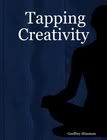 Two days ago, I posted a short story of mine called The Last Supper. I figured it was a timely post, with the new year approaching. I had something else in mind, however. If you haven't read the story yet, please take a few minutes to do so now. What follows will make more sense if you do.
Two days ago, I posted a short story of mine called The Last Supper. I figured it was a timely post, with the new year approaching. I had something else in mind, however. If you haven't read the story yet, please take a few minutes to do so now. What follows will make more sense if you do.
The following in excerpted from my eBook: Tapping Creativity.
They say that imitation is the most sincere form of flattery. It’s also a good way to kickstart a new piece of writing. Each of us has a small handful of writers we admire. Be it the concise journalistic prose of Hemingway or the winding, subconscious, lengthy sentences of Faulkner, delivery of your story hinges very much on technique.
Too often we get stuck in ruts. We use the same words. We use the same sentence lengths. We become predictable with the parenthetical phrases. Before you know it, you’re rhythm is a lullaby and you can barely stand writing it. Imagine a reader trying to endure it. You’re convinced, though, that if F. Scott Fitzgerald were writing the exact same story, it’d be un-put-down-able.
So why not write your story like one of your favorite writers would?
The following is the opening of a story that started as a poem. I had an awful time, for some reason, trying to shape it into prose. So I put it away and picked up one of my favorite authors, James Joyce, and read his story, The Dead. By adopting his sense of rhythm, syntactical freedom, and tone, I got the following:
Finding a parking space was difficult. We were always the last to arrive and the last to leave. It was my first New Year's Eve outside of Detroit, and although it was only Livonia, there is usually less Happy New Year gunfire.I continued this approach through the entire story, so much so that, in a workshop, one student actually said that the writing reminded him of Joyce’s The Dead. Maybe I was a little heavy-handed in the first draft. After a few rounds of revision, however, I made the story a little more “mine”. I may never have gotten to completion had I not first started by first imitating Joyce.
We pulled up along the curb; three houses down. The snowflakes were dipdancing down to the browned grass. It was pretty. Under the circumstances, it seemed really out of place. Walking to the house, I could see where others' prints were already being filled with newfall.
I felt the heaviness as I walked through the door. Uncle Mike and Aunt Maggie owned a sauna/massage parlor that occupied the front part of the house. Aunt Charlotte, with her nose reddened to match her hair, set down her drink rather clumsily—liquor lapping up the side of her glass. Nabbing our jackets, she swayed around the corner to one of the sauna rooms.
For a better look at the process, let’s take the above passage and try it like another writer might approach it—say, Hemingway. We’ll need to keep the sentences on the shorter side, use adjectives carefully, and pay close attention to natural details. Hemingway I’m not, but being familiar with his style, this is how I think it might read if he gave it a shot:
Parking spaces were few. We made a habit of arriving last. It was my first New Year’s Eve outside of Detroit. It was only Livonia, but there is less gunfire to greet the New Year.Shorter. Tighter. More direct. Better? That’s up to the reader. The important part is that the piece is definitely different and I achieved the difference by trying to use someone else’s words to tell my story. In the end, both versions are distinctly mine.
We parked along the curb, three houses down. Snowflakes fell on brown grass. Pretty. It seemed out of place. Walking to the house, I could see the others’ prints were already filling with new snow.
As I walked in the door, the room felt heavy. Uncle Mike and Aunt Maggie ran a sauna and massage parlor from the front of their house. Red haired and red-nosed Aunt Charlotte plopped her drink down. Liquor slid up the side of the glass. She took our jackets and cut a wide path around the corner to one of the sauna rooms.
To get started, take a piece you already have and rewrite it as your favorite writer might. This should get the words moving. If you’re feeling especially adventurous, trying rewriting Barbara Kingsolver as Don Delillo might. How would Gordon Lish present a work of John Cheever’s? There are endless combinations and they all force you to examine your words and achieve a tone. Once you get started, though, the hard part is over.


2 comments:
I understand about taking on another voice - several years back I was reading Good Omens by Neil Gaiman and Terry Pratchett. I used to write every single night, and so I noticed - I was taking on a slight amount of their tone.
Gotta love 'em. :)
Hey Geoff, Love the series. I really am fascinated with the Hemingway style of writing, although there are a few other modern day styles that I really appreciate.
The one that stands out to me is that of Robert McCammon. He wrote books like "The Stand", "Wolfe's Hour" etc. Huge influence while I was growing up.
I really enjoyed his style of writing.
Keep up the great posts!
Jim Moon
Post a Comment